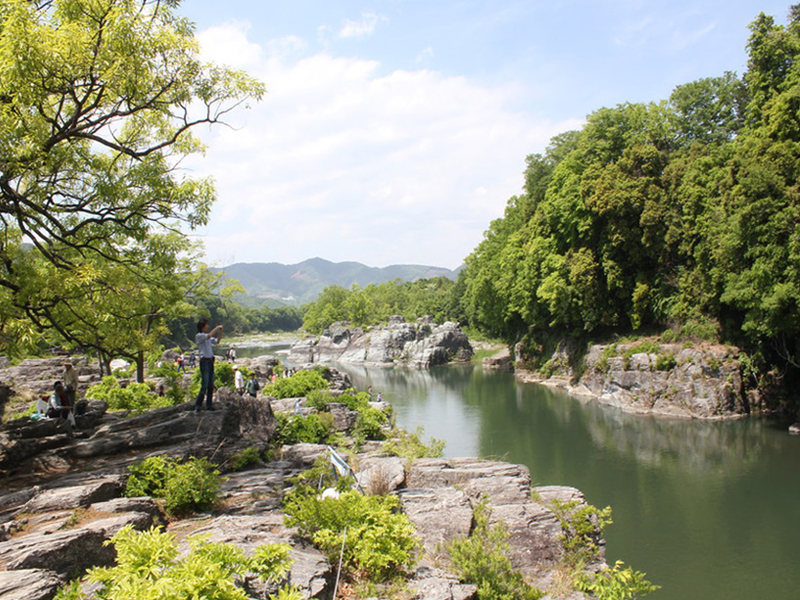Nagatoro Station
sightseeing
Map
Related Sightseeing Spots
Nearby spots

The Arakawa Line downstream boating in Chichibu Nagatoro allows you to ride upon the beautifully layered stone riverbed, which is designated as a national natural monument. It is a relaxing course with a couple of thrills along the way, but perfectly safe for children and seniors to enjoy as well. While listening to the boatman's entertaining speech, you can enjoy the cherry blossoms in the spring, the cool breeze in the summer, the beautiful colors of autumn, and the warmth of the kotatsu (heated table) boat in the winter. In other words, a perfect outdoor activity regardless of the season!

Established 290 years ago, Nagatorogura Sake Brewery and Boutique Store is a sake brewery that carries on the spirit of 11th Hino merchant Sōbē Fujisaki, who devoted his life to bringing Saitama’s Japanese sake to the world. In September 2018, to further pursue Sōbe Fujisaki's sake brewing tradition of “polish with skill and brew from your heart," the sake brewery moved to Nagatoro, a beautiful place of nature. Using naturally flowing water from the Fuppu area and rice grown on Saitama soil, we are producing the Japanese sake "THE SAITAMA ORIGINAL." (For more information about our facility, please visit the URL below.)

This garden is located on a vast field of about 10,000 square meters behind the Nagatoro Town Folk Museum. The Japanese name "Hanabishisou" comes from the shape of the California golden poppy, which is said to resemble a rhombus ("hishi" in Japanese, read "bishi" in the name). In early summer, California golden poppies bloom all over the entire hill, and from May to June, the contrast between the deep blue sky and the vivid orange flowers is mesmerizing.

This shrine was said to be founded by Yamato Takeru, the 12th Emperor of Japan, around 2,000 years ago. The current main building of the shrine is Shinto-style architecture, where the main hall and worship hall share one roof and are connected by an intermediate passageway. The main shrine, hall of offerings, and hall of worship were rebuilt during the end of the Edo period to the early Meiji period. The shrine is said to protect from fires, theft, and pain. Not only do many worshipers come from the local area, but also from throughout Kanto region, with more than one million annual visitors.

Presenting the theme, "From the past to the future: traveling 300 million years through Saitama's history of people's coexistence with nature," Saitama Museum of Natural History stores various resources related to nature, and displays the fossils of giant shark, “Megalodon," and mysterious sea animal, “Paleoparadoxia," discovered in Saitama Prefecture. The museum is constructed into two halls: the "Geology Exhibition," where visitors can learn about various fossils, rocks and minerals, geological strata and earth formations, and the "Biology Exhibition," featuring large dioramas of the four major forests of Saitama and the animals that live in them. Nagatoro area is a perfect example of the nature in Saitama, and here you can enjoy detailed explanations of its characteristics for a deeper understanding. You can also enjoy simulations and free audio guides. (For more information regarding the facility, please refer to the URL below.)

